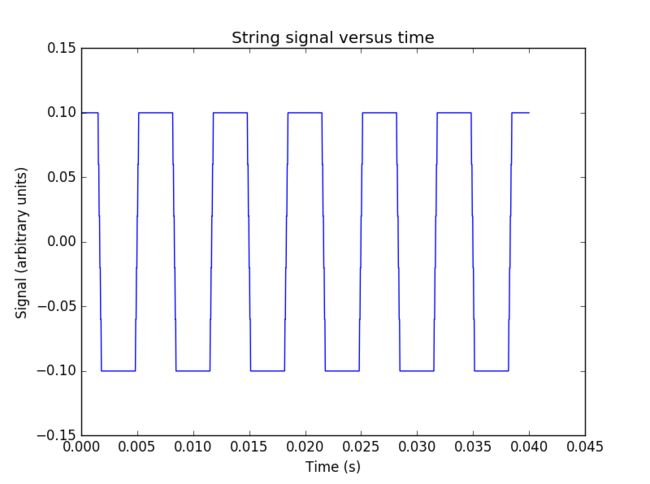Abstract
In this exercise I focus on waves on a string and study the spectrum of it.Though waves are complicated, by using programs we can directly obtain varities message.
Background
Wave Equation
In order to solve this equation it must give the boundary condition.We suppose that each ends of the string is well-fixed.To construct a numerical approach to the wave equation we treat both x and t as discrete variables.Derive the needed expression for the second partial derivative, and inserting it into the wave equation, we obtain:
To write the the expression at next time step the result from above can be written as:
Where r=1 is commanded.
The Main Body
Program 6.12
First of all , if we choose triangular wave as initial wave
The corresponding power spectrum are shown below
We can see there are several peaks in the power spectrum, with the increasing of frequency, the peakvalue get smaller.
Then we change the excited point. If the string is excited from x = 0.3, the signal is:
The following power spectrum:
The number of peak has increased, compared with last situation.
click here to see the code
Program 6.13
Consider the power spectra for waves on a string as a function of where the string vibration is observed,x0.
I choose 4 values of x0, which are 5percent, 10 percent, 40 percent, 50 percent from the end of the string.
First of all, if the string is excited at 50% of string (Gaussian profile), the power spectra at different nodes are:
Then, if the string is excited at 60% of string , the power spectra at different nodes are:
Last, if the string is excited at 80% of string , the power spectra at different nodes are:
From these three figures we can find:the power spectrum at 5% of string doesn't have 3000Hz component and the power spectrum at 10% of string doesn't have 1500Hz, 3000Hz components.While there don't exist conponent at 750Hz, 1500Hz, 2250Hz,3000Hz in the power spectrum at 40% of string.
click here to see the code
Reference
Yuqiao Wu's work
Xiao Guo's work







